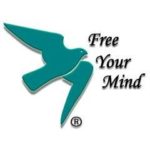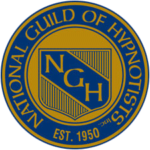CranioSacral Therapy (or CST) is a gentle, hands-on method of evaluating and enhancing the functioning of a physiological body system called the craniosacral system — comprised of the membranes and cerebrospinal fluid that surround and protect the brain and spinal cord. Using a soft touch generally no greater than 5 grams, or about the weight of a nickel, practitioners release restrictions in the craniosacral system to improve the functioning of the central nervous system.
By complementing the body’s natural healing processes, CST is increasingly used as a preventive health measure for its ability to bolster resistance to disease, and is effective for a wide range of medical problems associated with pain and dysfunction, including Migraine Headaches, Chronic Neck and Back Pain, Chronic Fatigue, Stress and Tension-Related Problems, and some Spinal injuries and degenerative conditions.
CranioSacral Therapy (CST) is a non-invasive, therapeutic form of bodywork designed to listen to and support nerve pathways in the body to integrate and heal. There is a focus on working with the skeletal system and the cerebrospinal fluid that circulates through the cranium, spinal cord, and sacrum. When the bones and tissues are aligned well, our nervous system can relax and respond better to daily life. Our circulation increases which in turn increases hormone flow and cellular function.
Ethan discovered Craniosacral therapy when he suffered with migraines around the year 2006, saw how well it worked, and ever since fell in love with this modality of healing. Ethan has trained with Dr Carol Phillips and with a couple friends and mentors one a massage therapist with 30 yrs of experience, the other is an acupuncturist with over 15 yrs experience in CST.
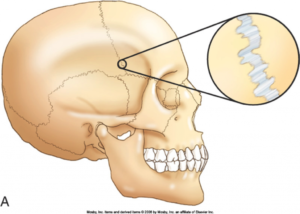 Craniosacral therapy originated in the early 1930s, starting with an understanding of cranial movement by William Sutherland, a doctor of Osteopathy. Sutherland believed that human skull bones are not fused, but rather that there is a subtle rhythm of motion as the cerebrospinal fluid (CSF), which is the fluid that bathes the brain and spinal cord, is gently pumped around the central nervous system. Craniosacral Therapy, as it exists today was further developed in the 1970s by Dr. John Upledger, a Doctor of Osteopathy.
Craniosacral therapy originated in the early 1930s, starting with an understanding of cranial movement by William Sutherland, a doctor of Osteopathy. Sutherland believed that human skull bones are not fused, but rather that there is a subtle rhythm of motion as the cerebrospinal fluid (CSF), which is the fluid that bathes the brain and spinal cord, is gently pumped around the central nervous system. Craniosacral Therapy, as it exists today was further developed in the 1970s by Dr. John Upledger, a Doctor of Osteopathy.
Craniosacral therapy works to relieve subtle and deep tension in the body, at the layer of the muscles and bones but also within the layers of fascia. This allows for chronic and patterns of complex illness to be addressed, allowing the flow of the CSF to be restored and optimized, benefiting the nervous system and therefore the whole body. Craniosacral therapy is useful in treating conditions such as a back and muscle pain, both from recent or old injuries or strain, chronic conditions like fibromyalgia, multiple sclerosis, autism, ADD/ADHD, and more. It is also useful in the treatment of stress-related issues, depression, anxiety, PTSD, as well as spinal, digestive and sleep problems.
A craniosacral therapy session involves the patient lying down on his/her back while the practitioner uses gentle hands-on bodywork at different stations on the body as well as on patient’s skull. This allows the practitioner to detect and gently release restrictions to the flow of the CSF as well gently correct any imbalances and found that may be causing health problems or tension in the body.
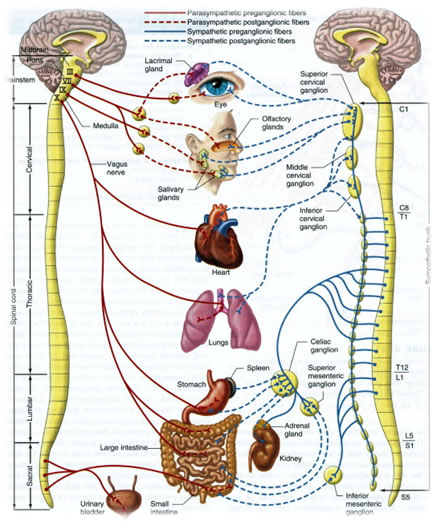
Craniosacral Therapy has its origins in Osteopathy and its application and methods have been refined over the past several decades by many prominent leaders in this field and recognized teaching institutions (worldwide).
Craniosacral Therapy (CST) is a gentle, hands-on method of evaluating and enhancing the Craniosacral System, the environment in which the brain and spinal cord function. Imbalance or dysfunction in the Craniosacral System can cause a wide range of sensory, motor or neurological impairments and dysfunction. Craniosacral Therapy has been found to be effective for an extensive variety of health issues (click here to see what they are), and some of these are listed further down the page, along with a variety of YouTube clips of an interview with the founder of CST in SA, Dr Alan Pelowski where he covers some topics and conditions in which it is used.
How Does CranioSacral Therapy Work?
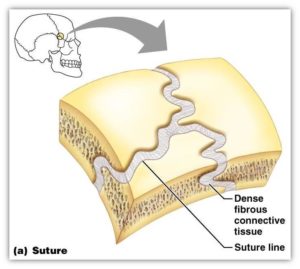 Few body systems have more influence over your health and well-being than your central nervous system (CNS). And few body systems have more impact on your central nervous system than the CranioSacral system – the soft tissues and fluid that protect your brain and spinal cord. Every day your body absorbs the stresses and strains that are part of modern life. But your body can only handle so much tension before the tissues begin to tighten, eventually affecting the brain and spinal cord, which can compromise the function of the central nervous system. That can impair the performance of nearly every other system in your body.
Few body systems have more influence over your health and well-being than your central nervous system (CNS). And few body systems have more impact on your central nervous system than the CranioSacral system – the soft tissues and fluid that protect your brain and spinal cord. Every day your body absorbs the stresses and strains that are part of modern life. But your body can only handle so much tension before the tissues begin to tighten, eventually affecting the brain and spinal cord, which can compromise the function of the central nervous system. That can impair the performance of nearly every other system in your body.
CST releases deep tensions to allow the entire body to relax and self-correct. By freeing the central nervous system to perform at its best, CST naturally eliminates pain and stress, strengthens your immune system, and enhances your health and well-being. CranioSacral Therapy can help relieve pain, release restrictions in movement, and provide lasting relief from emotional distress to improve overall quality of life. This gentle, yet profound, treatment addresses the central nervous system, which in turn affects the rest of the body’s systems, soft tissues and the body’s energy fields.
.
By complementing the body’s natural healing processes, CST is increasingly used as a preventive health measure for its ability to bolster resistance to disease, and is effective for a wide range of medical problems associated with pain and dysfunction, including:
.
- ADD/ADHD
- Alzheimer’s Disease and Dementia
- Autism
- Central Nervous System Disorders
- Chronic Fatigue
- Chronic Neck and Back Pain
- Colic
- Concussions
- Concussions and Traumatic Brain Injuries
- Connective-Tissue Disorders
- Emotional Difficulties
- Fibromyalgia
- Headaches
- Infantile Disorders
- Learning Disabilities
- Migraine
- Motor-Coordination Impairments
- Neurovascular or Immune Disorders
- Orthopedic Problems
- Post-Surgical Dysfunction
- Post-Traumatic Stress Disorder
- Scoliosis
- Spinal Cord Injuries
- Stress and Tension-Related Problems
- TMJ Syndrome
- Temporomandibular Joint Syndrome (TMJ)
- etc..
What should I expect during my CranioSacral Therapy Session?
CranioSacral Therapy is a subtle but deep therapy. You will lie, fully clothed, on a massage table, while your practitioner works both over and under your body, providing gentle pressure, gentle traction and subtle movements to release tensions deep within your body.
Most of the work will be on your head, neck and sacrum. Your therapist will use delicate manual techniques to release tensions and improve the form and function of your central nervous system. These techniques include gently “sandwiching” your body, and gentle pressure and traction to your head and your sacrum. Your therapist will integrate your system with gentle motions involving both sacrum and cranium.
A CranioSacral Therapy session can last up to an hour or more. It can be used alone, or integrated with other therapies to create powerful effects. What you experience from your own session is highly individual. but every sessions is deeply relaxing.
The changes you experience during your session are only beginning. Things may continue to continue moving and shifting for 24 hours after the session. Drinking plenty of water will facilitate the process.
What is it that CranioSacral Therapy is Affecting?
Dr. John Upledger and a team of anatomists, physiologists, biophysicists and bioengineers developed CranioSacral Therapy after the discovery that there is a pulse in the cerebrospinal system, and that human cranial bones are not, as previously thought, fused. Upledger learned that the pulse in the cerebrospinal system is caused by the cyclic increase and decrease in the amount of cerebrospinal fluid in the system. That cycle creates a cycle of expansion and contraction of the skull.
When tensions in our bodies get severe enough, they begin to impact the connective tissues in our brains, restricting the skull’s ability to expand and contract naturally. This, in turn, affects the nervous system in a myriad of ways. CranioSacral Therapy releases restrictions in those tissues, allowing the skull to move freely.
Anatomical root of CranioSacral Therapy
To explore the wonder of CST, a brief overview of the anatomy of the CSS is in order. The cranium is lined with dura mater, which not only encircles the inner surfaces of the cranial bones but also folds in on itself. This creates the falx cerebri, tentorium cerebelli and the falx cerebelli, otherwise known as the intracranial membrane (ICM). The firm attachment of the falx cerebelli at the foramen magnum of the occiput continues inferiorly with attachments on the posterior bodies of C1 and C2. It continues in the inferior direction without any attachments until it anchors at the S2 segment as the pia portion of the filum terminale within the sacral canal. It exits out of the sacral canal and continues as the external dural segment of the filum terminale blending with the periosteum of the coccyx (1,2) In addition, the dura mater extends out through the intervertebral foramina with the spinal nerves as the dural sleeves. The dural sleeves attach on the vertebral bodies, blending with the paravertebral fascial tissue.(3) These anatomical attachments help give credence to the continuity of the fascia and are why CST has such far-reaching effects.(4)
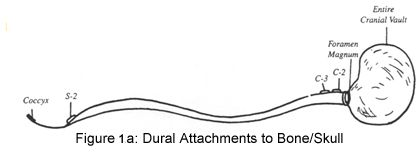
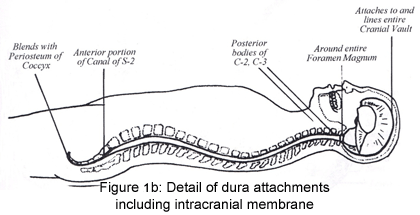
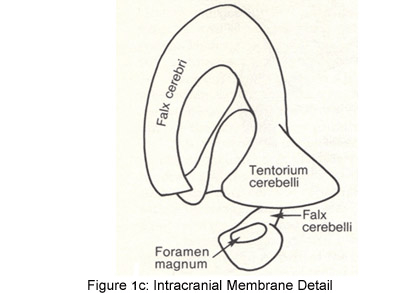
The core principle of honoring and listening to the experiences held in the tissues is key to the success of CST.(4) Sometimes the unique pattern of injury does not fit within the confines of the traditional physical therapy paradigm.
Following the tissues engages the patient’s self-correcting mechanism, which allows the therapist to discover the unique way the body organized the traumatic forces that so often lead to chronic symptoms. This process assists the client in unraveling the trauma, leading to more homeostasis. (5,6,7)
SomatoEmotional Release (SER) is a therapeutic process that uses and expands on the principles of CranioSacral Therapy to help rid the mind and body of the residual effects of trauma. SER1 offers applications designed to enhance results using CST and other complementary therapies.
- Assess and mobilize the Avenue of Expression working through more than 10 different body components, including the thoracic inlet, hard palate and hyoglossal tissues.
- Locate and release Energy Cysts.
- Release suppressed emotions that may be inhibiting complete structural releases.
- Refine listening and comprehension skills.
- Improve palpation and whole-body evaluation skills.
Read more on Somatoemotional release here
Find all the Cranioscaral Therapy articles we have here: http://www.wisemindbodyhealing.com/tags/craniosacral-therapy-cst/
Contact us today to book an appointment to begin your healing journey with Wise MindBody Healing (612) 444-1167
Referencess
1) CranioSacral Therapy 1 Study Guide. Upledger International, Palm Beach Gardens, FL, 1987.
2) Upledger JE, Vredevoogd JD. CranioSacral Therapy. Eastland Press, Seattle, WA; 1983.
3) Paoletti, S. The Fasciae. Eastland Press, Seattle, WA; 2006.
4) Barral JP, Crobier A. Manual Therapy for the Peripheral Nerves. Churchill Livingstone Elsevier Philadelphia, PA; 2007.
5) Still AT. Autobiography of A.T. Still. 1897.
6) Barral JP, Crobier A. Manual Therapy for the Peripheral Nerves. Churchill Livingstone Elsevier Philadelphia, PA; 2007.
7) Barral JP, Crobier A. Trauma: An Osteopathic Approach. Eastland Press, Seattle, WA; 1999.




